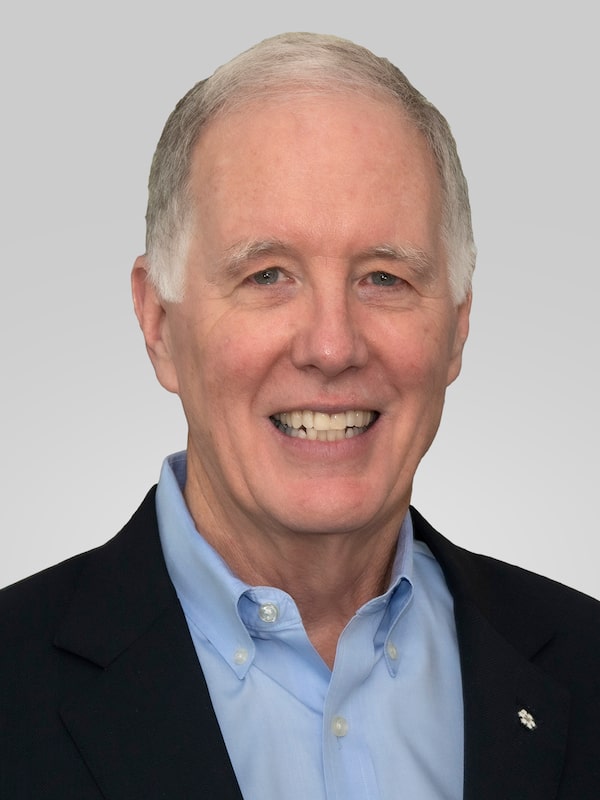
iStockPhoto / Getty Images
When it comes to retirement, both planning for it and living it, Jim Leech is one of Canada’s foremost experts.
As the former chief executive officer of the Ontario Teachers’ Pension Plan, he oversaw the transformation of the organization into one of the international models for pension groups to emulate.
In the seven years since he left Teachers, Mr. Leech co-authored an acclaimed business book on the looming Canadian pension crisis, The Third Rail: Confronting Our Pension Failures and has devoted his time to various philanthropic pursuits.
More recently, he joined a group of industry advisors working on the creation and launch of Purpose Investment’s Longevity Pension Fund.
Here, Mr. Leech discusses the pension crisis in Canada and why he chose to work with Purpose, one of the few ‘business-ey’ type roles he’s taken on since his own retirement:

Jim LeechSUPPLIED
Q: With your unique experience as an executive at Teachers’ and author on the subject, could you describe the retirement situation for Canadians generally? Are we in trouble as a country?
A: Canada is in a better place than many other jurisdictions; in the top 75 per cent regarding the financial security of people as they get older and retire. However, there are still issues that need to be addressed.
We have now, unfortunately, a two-tiered system where a diminishing percentage of people are members of defined benefit plans [that provide some guaranteed income in retirement]. The rest are either in defined contribution pension plans or doing it on their own with RRSPs. While those with defined contribution plans are accumulating assets, they face the dilemma of what to do with that nest egg. Many people who only have RRSPs simply aren’t saving enough.
How big is that gap of not saving enough?
It is a very large percentage of people: The typical member of a defined benefit plan is saving roughly 10 per cent of their salary each year. They are forced to save it. When people complain and say the teachers of Ontario have this rich plan, they forget that they put away 12 per cent of their salary each year.
You warned about a looming pension crisis in your book. Did that play a role in your advising on the creation of the Longevity Pension Fund?
Yes. What attracted me was that Purpose was trying to address the question of how much to save, how much can people withdraw and what do you do with your money when you retire if you don’t have a defined pension plan.
The beauty of a defined pension plan is you can pool the longevity risk. The advantage I had in managing the Teachers’ plan is that I could manage the fund under the assumption that everyone would live to the actuarial mean. With pooling, I don’t need as much money.
Basically, people dying earlier than average support those who live longer than average?
Yes.
The Longevity Pension Fund is the world’s first mutual fund to incorporate longevity risk pooling, like a pension fund, to provide income for life through a flexible and redeemable mutual fund structure available to Canadian retirees.
So, the Purpose Longevity fund acts like a defined pension plan?
Yes. Purpose replicated the back end of a defined benefit pension plan. It is a challenge that the industry has been talking about for years.
What [Purpose founder] Som Seif and his team have cracked is the size of the pool and the age groups you need to have where people are protected. It guarantees that people will have an income until they die.
Beyond dollars and cents, are there other benefits for members of defined plans?
Studies show that one of the major contributors to your demise when you are older is financial insecurity. If money is weighing on your mind all the time, that contributes to an earlier demise. This product reduces that anxiety considerably.
There are other investment products out there; what sets Longevity apart?
The most obvious one was buying a life annuity. But they are expensive and don’t produce the same results because they are individual and not pooled. Before people had the choice of buying an annuity or trying to manage their investments themselves. Now you can buy into something that replicates the back end of a defined benefit plan where there is professional management and pooling of investment and longevity risk.
What do you see in the positives for Canadians’ retirement who aren’t fortunate enough to be in a defined benefit plan?
The industry is not known for risk-taking, but this product is, to me, ground-breaking and precedent-setting. As more baby boomers retire, this market becomes bigger, and it will pay for organizations to innovate and take some risks. I think that Purpose is at the forefront of very interesting things that are going to happen.
Right now, you hit the end with your RRSPs, and you put it in an RRIF, and you withdraw the minimum. It’s not very imaginative. I think the Longevity Pension Fund is the start of something that is going to be self-perpetuating.
You have been retired seven years and look to be going strong at 74; what are the highlights for you?
Normally, for people in my position, you go on three corporate boards, two charities and you buy a place in Florida. I concluded I didn’t want to do anything in business anymore.
I became chancellor of Queen’s University, I became chair of the Mastercard Foundation, one of the largest foundations in the world with US$45-billion. It’s focused on Africa, so I flew over to Africa four times a year. I chaired the UHN Foundation, and I was an advisor to Prime Minister Trudeau in setting up the Infrastructure Bank at a dollar-a-year salary and am on a group that advises the Minister of Finance in Ontario. All non-partisan.
Working with Purpose is unusual. It’s one of the only business-ey things that I have done. They piqued my curiosity because they figured out how to pool longevity risk.
This isn’t public service, but it is close to it.
Commissions, trailing commissions, management fees and expenses all may be associated with the Fund. Investments in the fund are not guaranteed, and the Fund’s value may change frequently. Past performance may not be repeated. Income in the form of Fund distributions is not guaranteed, and the frequency and amount of distributions may increase or decrease. The Fund has a unique mutual fund structure. Most mutual funds redeem at their associated Net Asset Value (NAV). In contrast, redemptions in the decumulation class of the Fund (whether voluntary or at death) will occur at the lesser of NAV or the initial investment amount less any distributions received.
The content of this article is for informational purposes only, and is not being provided in the context of an offering of any securities described herein, nor is it a recommendation or solicitation to buy, hold or sell any security.
This material is for informational and educational purposes and it is not intended to provide specific advice including, without limitation, investment, financial, tax or similar matters. The information provided is subject to change without notice and neither Purpose Investments Inc. nor is affiliates will be held liable for inaccuracies in the information presented.
Advertising feature produced by Globe Content Studio with Purpose Investments. The Globe’s editorial department was not involved.